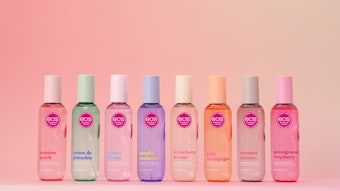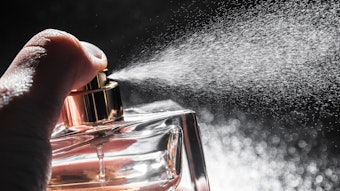At Bell Flavors & Fragrances' Fragrance Workshop, held April 26, 2011, Taya Tomasello, Mintel's U.S. director of beauty innovation, reviewed recent trends and traditions in Asia, which included ingredients formulated into or used to inspire the fragrance of personal care products.
Japan
Trends in Japan were discussed first, as Tomasello introduced many attendees to the Japanese tradition of "hanami," or flower viewing. This practice celebrates the blooming of the "sakura," or cherry blossoms, which is a sign of spring in Japan. According to Tomasello, there are nearly 200 varieties of cherry blossoms, and because they are difficult to distill, their presence in personal care products is often fragrance inspiration rather than raw material. The cherry blossom is often seen in the fragrance and packaging of color cosmetics and skin care in addition to some Japanese beverages, where it is used as a flavor.
Also part of the flower viewing is "ume," also known as the Japanese apricot or Chinese plum. Similarly to the "sakura," this tree, Prunus mume, produces flower blossoms every spring. It has also been used to inspire fragrance and packaging of personal care products.
China
Moving to Chinese ingredient trends, yuzu is a versatile fruit that has made its way into a number of personal care products. The fruit can be found in color cosmetic formulations in China in addition to beverages. According to Tomasello, it has migrated to the United States and Europe mostly in the food and beverage markets but also in medicated bath tablets.
Of course, no discussion of Chinese ingredient trends would be complete without mentioning green tea. This ingredient, which is available in a number of varieties (gyokuro, sencha, matcha, ganmaicha, etc.) all have different functions in personal care products. Some are formulated in skin care products to soothe skin, protect skin against free radicals and even to lighten skin.
Tomasello also briefly mentioned that lychee continues to be a popular ingredient in Chinese personal care products and beverages.
South Korea
In the South Korean personal care market "hanbang," or Korean medicinal cosmetics, are popular among consumers, according to Tomasello. She noted that these cosmetics often are formulated with traditional Korean herbal ingredients and that certified "hanbang" cosmetics are marked with the namesake logo.
Also popular in South Korea is "sujeonggwa," a Korean drink. It is made from cinnamon, ginger, peppercorn and persimmons, and is often used as inspiration for personal care products.
India
Ayurvedic cosmetics still continue to dominate the Indian cosmetic market. These cosmetics use formulated with traditional Indian herbs. Tomasello noted that jasmine, known as the "king of perfumes" in the Indian market, continues to be a popular fragrance.
Agarwood, or "wood of the gods," is popular in Indian fragrance. Amba haldi, a root similar to ginger with a flavor compared to mango, is also being increasingly used in Indian personal care products, where it has been promoted to stimulate blood circulation.










